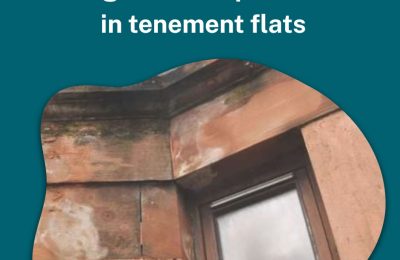Hard as it may seem to believe, we find ourselves now a quarter-way through the 21st Century. If you can cast your mind all the way back to the year 2000, you may remember the first of many summers dominated by the new reality show Big Brother. Perhaps you were listening to Coldplay’s first album. Sony had just released the Playstation 2, and Marvel movie mayhem officially began with the release of X-Men. It was arguably a different world back then, and the same can be said for Scotland’s private rented sector.
Introduction of tenancy deposit schemes
For the first decade of the century, tenancy deposit schemes – such as SafeDeposits Scotland – simply did not exist. It wasn’t until the Scottish Government introduced The Tenancy Deposit Schemes (Scotland) Regulations 2011 that tenancy deposit protection took off. These rules made it mandatory for landlords to lodge their tenants’ deposits within 30 working days of the tenancy start date. The purpose of these rules is both to protect the tenant’s deposit, and provide the landlord with a route to recourse should the tenant fail to comply with the rules laid out in the tenancy agreement.
SafeDeposits Scotland, Scotland’s leading tenancy deposit scheme, began to operate in 2012, and along with protecting deposits, also offers a free resolution service that tenants and landlords can use to try and come to an agreement if there is a dispute over a claim the landlord has made against part of the deposit.
The First-tier Tribunal
If the landlord does not register the tenant’s deposit with one of the three government approved schemes within the 30 working day period, then whether the landlord does lodge the deposit later or fails to register it at all, this is grounds for the tenant to take the landlord to the First-tier Tribunal (FTT) which may award them up to three times the original deposit amount.
The First-tier Tribunal for Scotland (Housing and Property Chamber) did not exist until the Tribunals (Scotland) Act 2014. Its purpose is to make decisions on housing-related cases; such as cases relating to the repairing standard or landlord’s right of entry. From 1st December 2017, the Tribunal also began to oversee cases relating to deposits, such as the aforementioned instance of an unprotected deposit.
Before the Tribunals (Scotland) Act 2014, housing cases would have been handled either by the Private Rented Housing Panel (PRHP) or the Homeowner Housing Panel (HOHP). The introduction of the FTT combined these two so that all housing cases would be overseen by the one entity.
Changes to lengths of tenancies
Previously, there were two types of tenancies: assured, and short-assured. An assured tenancy would allow the tenant to stay in the property for as long as they wanted, whereas a short-assured tenancy would only allow the tenant to stay for a fixed period of time. This changed following the Private Housing (Tenancies) (Scotland) Act 2016. This replaced the two previous types of tenancy, and as of 1st December 2017 all new tenancies have instead been private residential tenancies.
Private residential tenancies brought with them a few new rules, including no longer allowing landlords to ask tenants to leave due to their term ending, as well as the ability to introduce rent caps for pressure areas. Existing assured and short-assured tenancies from before 1st December 2017 have continued to exist as is, however with many of those short-assured tenancies ending, this form of tenancy is generally being phased out, and tenants looking to move into new tenancies will be switching to the newer private residential tenancy model.
As we step into the second quarter of the century, the PRS remains in the news with the new Housing (Scotland) Bill currently under discussion, and including several amendments to current legislation.











